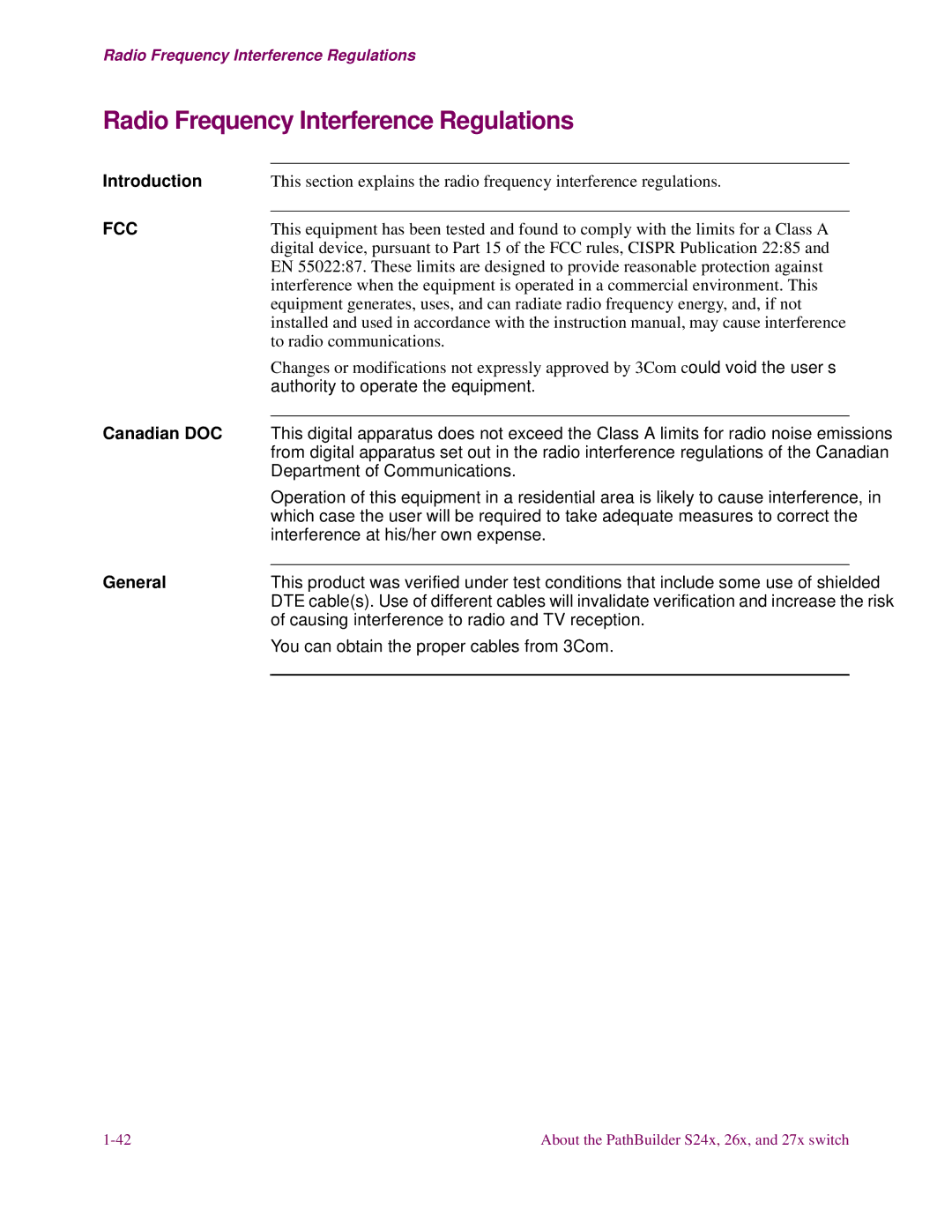Radio Frequency Interference Regulations
Radio Frequency Interference Regulations
Introduction | This section explains the radio frequency interference regulations. | |
FCC |
| |
This equipment has been tested and found to comply with the limits for a Class A | ||
|
| digital device, pursuant to Part 15 of the FCC rules, CISPR Publication 22:85 and |
|
| EN 55022:87. These limits are designed to provide reasonable protection against |
|
| interference when the equipment is operated in a commercial environment. This |
|
| equipment generates, uses, and can radiate radio frequency energy, and, if not |
|
| installed and used in accordance with the instruction manual, may cause interference |
|
| to radio communications. |
|
| Changes or modifications not expressly approved by 3Com could void the user’s |
|
| authority to operate the equipment. |
Canadian DOC |
| |
This digital apparatus does not exceed the Class A limits for radio noise emissions | ||
|
| from digital apparatus set out in the radio interference regulations of the Canadian |
|
| Department of Communications. |
|
| Operation of this equipment in a residential area is likely to cause interference, in |
|
| which case the user will be required to take adequate measures to correct the |
|
| interference at his/her own expense. |
General |
| |
This product was verified under test conditions that include some use of shielded | ||
|
| DTE cable(s). Use of different cables will invalidate verification and increase the risk |
|
| of causing interference to radio and TV reception. |
|
| You can obtain the proper cables from 3Com. |
|
|
|
About the PathBuilder S24x, 26x, and 27x switch |
